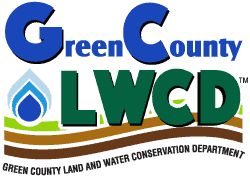
Federal Programs
These are the programs available at a Federal Level. There are also County Programs and State Programs.
Environmental Quality Incentives Program
The Environmental Quality Incentives Program (EQIP) is a voluntary conservation program that helps agricultural producers in a manner that promotes agricultural production and environmental quality as compatible goals. Through EQIP, agricultural producers receive financial and technical assistance to implement structural and management conservation practices that optimize environmental benefits on working agricultural land. Applications for EQIP can be submitted to NRCS at any time. Dates are set periodically to rank applications for available funding. All EQIP applications in Wisconsin are prioritized using a screening tool. Applications will receive a high, medium, or low priority as of the application deadline. High priority applications will be ranked and funded first, followed by medium and low, as funding allows.
Cover Crops
A cover crop is grasses, legumes, forbs or other herbaceous plants that are established for seasonal cover and conservation purposes. Cover crops are planted in the late summer or fall around harvest and before spring planting of the following year’s crops. Common cover crops used in Wisconsin include winter hardy plants such as rye and wheat. Other less common, but also effective cover crops include barley, oats, spring wheat, hairy vetch, red clover, turnips, canola, radishes, and triticale. This practice may be used to reduce wind and water erosion by establishing cover after a minimal residue crop, to use up excess nutrients in the soil profile, for weed suppression, to provide nutrient for the next crop, to increase carbon sequestration and improve soil structure. Cover crops may be used on all lands needing vegetative cover for natural resource protection and improvement. They are an excellent tool for helping to improve soil health.
Honey Bee Pollinator
This effort provides technical and financial assistance to farmers to improve the health of honey bees. Honey bee numbers have been declining over the past 50 years. Since 2006, ~30 % of honey bee hives in the U.S. have been lost each winter to diseases, parasites, poor nutrition, pesticide exposure and other issues. Honey bees pollinate more than 130 fruits and vegetables, which is estimated to be $15 billion worth of pollinated U.S. crops. To address this concern, NRCS has dedicated funds through the Environmental Quality Incentives Program, for practices to increase and improve honey bee food sources. These practices assist by improving preferred wild and cultivated foraging plants, developing and implementing integrated pest management, and by implementing managed intensive grazing systems that maximize high-quality honey bee forage.
Conservation Reserve Program
The Conservation Reserve Program a voluntary program for agricultural landowners. Through CRP, you can receive annual rental payments and cost-share assistance to establish long-term, resource conserving covers on eligible farmland. The Commodity Credit Corporation (CCC) makes annual rental payments based on the agriculture rental value of the land, and it provides cost-share assistance for up to 50 percent of the participant’s costs in establishing approved conservation practices. Participants enroll in CRP contracts for 10 to 15 years. The program is administered through the Farm Service Agency (FSA). Natural Resources Conservation Service works with landowners to develop their application, and to plan, design and install the conservation practices on the land. County Land Conservation Departments and the Wisconsin Dept of Natural Resources also provide technical support for the Conservation Reserve Program. The Conservation Reserve Program reduces soil erosion, protects the nation’s ability to produce food and fiber, reduces sedimentation in streams and lakes, improves water quality, establishes wildlife habitat, and enhances forest and wetland resources. It encourages farmers to convert highly erodible cropland or other environmentally sensitive acreage to vegetative cover, such as cool season or native grasses, wildlife plantings, trees, filter strips, or riparian buffers. Farmers receive an annual rental payment for the term of the multi-year contract. Cost sharing is provided to establish the vegetative cover practices.
Conservation Stewardship Program
The U.S. Department of Agriculture’s Natural Resources Conservation Service works with farmers and landowners through the Conservation Stewardship Program (CSP). CSP helps producers build on existing conservation efforts while strengthening operations by rewarding farmers for five years, for conservation they are already applying at the time of application. Ideal CSP participants are farmers who have a current conservation plan, are following a nutrient management plan, are managing for soil health with reduced tillage and cover crops and have field setbacks from surface water. Participants will need to select at least one CSP activity to further enhance the conservation on their operation. A few of the most popular CSP activities include applying cover crops for soil health, leaving a small stand of unharvested grain to benefit wildlife, managing livestock fencing for wildlife or establishing small areas for butterfly habitat. Participants receive additional payments for implementing a conservation activity. Payments vary among participants. The more conservation already implemented on the operation, and the level of new adoption of conservation you’re willing to do, the higher the payment.
